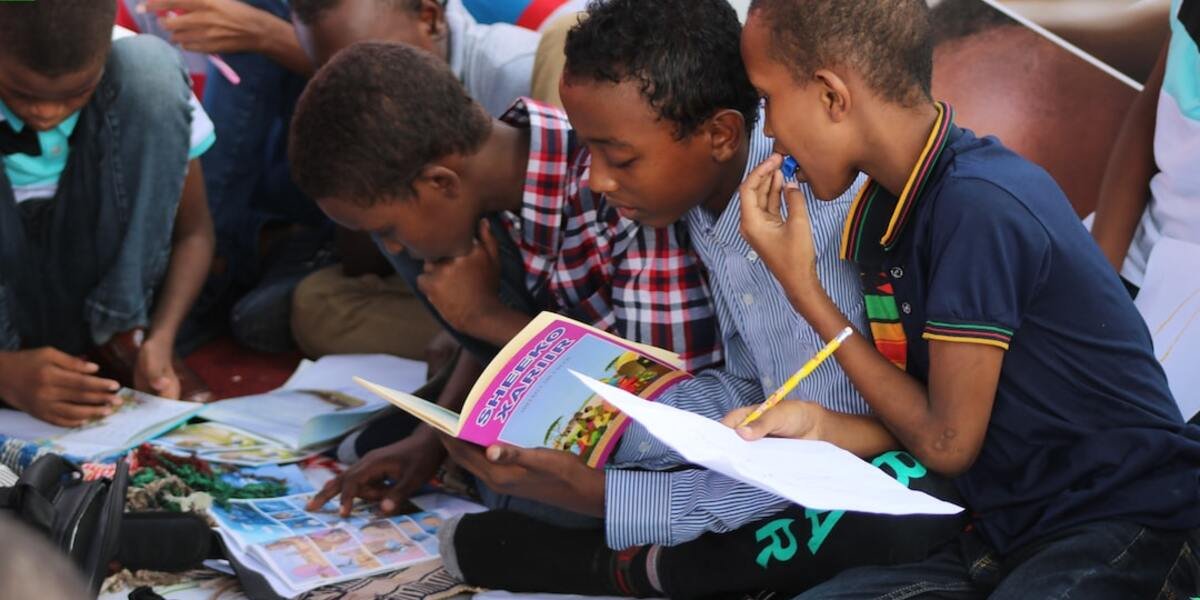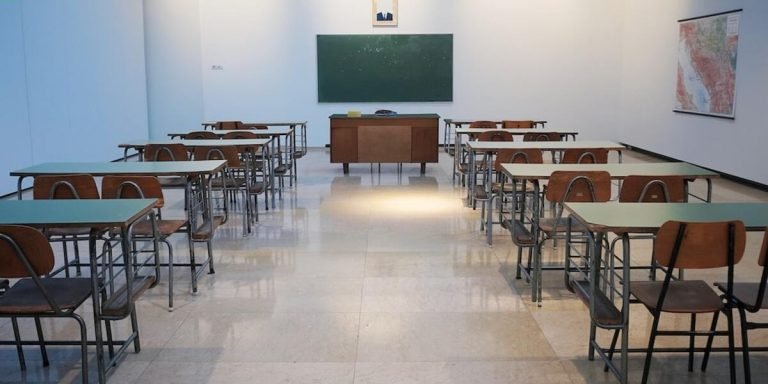Tech Teaching: Integrating Modern Technology into Early Childhood Education
The rise of “tech teaching” has irreversibly transformed the landscape of early childhood education, making it more engaging and interactive than ever. Today’s modern technologies are not only meant to entertain but also serve as powerful tools in fostering educational growth among young learners. These developing minds are growing up surrounded by technology; thus, integrating these familiar elements into their learning journey makes sense.
Technology integration in education is about using tech tools effectively to enhance learning objectives while promoting creativity and critical thinking skills among children. It involves incorporating different kinds of technology from computers, tablets or smartphones to virtual reality systems or software applications that provide an immersive learning experience for kids. When used correctly, this amalgamation can help equip them with necessary life skills such as adaptability and problem solving – all essential competencies for our fast-paced digital world.
Did you know?
Did you know that according to a study by Common Sense Media, over 50% of children under the age of 8 have already used a computer or mobile device for educational purposes? This highlights the growing integration of technology in early childhood education.
The Role of Technology in Modern Classroom Settings
The modern classroom has undergone a major overhaul, with technology firmly cementing its role in the education system. It’s not just about introducing tools for teaching; it is about integrating tech into every fabric of learning to promote engagement and deepen knowledge absorption among students. When we talk about “tech teaching”, we’re referring to this comprehensive intersection of technology and education.
In recent years, especially since the advent of COVID-19 pandemic that switched gears towards remote learning on an unprecedented scale globally, there’s been rapid advancement in terms of innovative educational technologies revolutionizing how information is imparted and received. Now imagine stepping into a contemporary 2023 classroom setting where smartboards have replaced traditional chalkboard or whiteboards while VR headsets are being used for historical trips instead of textbooks.
Educational studies have displayed positive correlations between tech integration in classrooms and improved student performance outcomes – both academically as well as skill development-wise. Teaching through dynamic digital media creates immersive environments fostering active participation which invariably leads to better comprehension even among typically passive learners. Hence, utilizing ‘Tech Teaching’, educators are able explore wider dimensions creating more inclusive lessons focusing equally on individuality and collaborative problem-solving skills building.
While early childhood curriculum highlights foundational literacy skills such as reading & writing along with mathematical competence – infusing age-appropriate technological interfaces within their daily practices can significantly enhance these desired academic proficiencies from very beginning stages shaping them holistically prepared global citizens ready to contribute effectively nurturing sustainable future societies.
Integrating EdTech Tools for Enhanced Learning Experiences
In today’s fast-paced, digital era, integrating EdTech tools for enhanced learning experiences is more vital than ever. This innovative approach to teaching and learning, often termed as ‘tech teaching’, has revolutionized the conventional classroom environment.
Education technology (EdTech) enhances traditional instructional methods by providing interactive platforms and tools that cater to diverse learner needs. From intricate scientific simulations to engaging language-learning apps—these technologies are pushing the boundaries of traditional pedagogy.
An effective tech teaching strategy encourages individual exploration while fostering collaboration amongst students. Through online discussion boards or collaborative projects on cloud-based software like Google Docs, students learn from each other in a community-driven setting.
The evolution of adaptive testing guarantees every student gets a personalized experience with EdTech integration. The system adapts itself according to the learners’ strengths and weaknesses which fosters both comprehension and confidence among pupils—the cornerstone of any successful educational journey!
Moreover, augmented reality (AR) & virtual reality (VR) techniques have opened new frontiers in education technology’s application scope concerning modern classroom settings—2023 being no different! Be it touring celestial bodies using VR headsets during Astronomy class or exploring human anatomy through AR-enabled books; these immersive educational practices ensure an elevated level of interaction & understanding previously unimaginable within a typical four-walled classroom scenario.
Adapting Curriculum to the Digital Age: Strategies for Educators
The process starts with rewriting lesson plans around technology. Traditional lessons can be tweaked to add in elements where students use devices such as tablets or computers. For instance, instead of reading from textbooks alone, they might watch videos or take interactive quizzes online.
Another strategy is using tech tools like virtual reality (VR) and augmented reality (AR) equipment when available. These technologies provide immersive learning experiences which are shown to improve understanding and retention rates among children dramatically.
Collaboration is another significant advantage offered by integrating technology into classrooms settings in 2023.
Educational platforms allow students not only collaborate on projects within their classroom but also with other kids worldwide enhancing cultural exchange and global knowledge building at early ages.
Bridging Traditional Teaching with Tech Teaching Methods
serves as a pivotal discourse in the current educational climate. Given our rapidly progressing digital world, it’s high time we acknowledge and embrace technology’s role in revolutionizing classroom dynamics. While traditional teaching methods have their merits, integrating them seamlessly with tech teaching can enhance learning outcomes significantly.
Tech-teaching is not about overriding the roots of education; rather, it aims to leverage technological tools to supplement conventional instruction methodologies. The goal is creating an enriching environment where each student enjoys a personalized learning experience powered by artificial intelligence software, virtual reality sessions or interactive whiteboards. With this approach, educators are equipped with numerous resources that make lessons more engaging for students and also cater individually catering to different competencies and skills levels among them.
Utilizing Interactive Platforms for Student Engagement
In the modern era of 2023, integrating technology into education is no longer a luxury but a necessity. Harnessing tech teaching methods to bridge traditional forms of instruction can lead to improved student engagement and learning outcomes.
One way educators are accomplishing this feat is through utilizing interactive platforms for student engagement. These innovative tools offer ways to make teaching more efficient and engaging- really kicking up the interest level in classrooms or virtual learning environments.
Interactive platforms differ from straightforward e-learning programs because they allow real-time interaction between students and teachers. In essence, these digital spaces aim at making lessons dynamic instead of static by turning passive recipients into active participants.
Whether it’s quizzes that enthrall learners or collaborative boards on which ideas come alive, such features animate classroom discussions with an impressive reach far beyond physical boundaries – thanks largely due to advancements in tech teachings methodologies over recent years.
Apps like Kahoot! enable teachers to create custom multiple-choice quiz games that help reinforce learned concepts while instilling fun elements into seemingly mundane revision periods. Similarly, Google Classroom serves as a shared space where assignments get posted online; removing paper-based activities hence offering timely feedback becomes much easier than ever before.
Moreover, websites including Padlet facilitate brainstorming sessions amongst classmates irrespective of geographical distance through its digital post-it notes facility fostering creativity while aiding collective memory recall during study group meetings organized virtually.
Leveraging Online Resources for Diversified Instruction
In this era of digital revolution, tech teaching has become a powerful tool to provide diversified instruction. By leveraging online resources, educators can offer tailored learning experiences that engage and motivate every student.
Virtual classrooms have shattered geographical boundaries as students across the globe come together to learn from experts without leaving their homes or schools. Discussions are no longer confined within four walls of a classroom but extend beyond borders facilitating diverse viewpoints making education global.
Educational games and apps create an exciting environment where children get hooked onto learning while having fun! This method embraces gamification theory which proves effective in improving retention rates thus fostering better understanding.
Smartboards replacing traditional blackboards is another example how tech teaching aids visually stimulating interaction between teacher and pupil thereby reducing passive listening time during class hours leading towards active participation instead.
Digital storytelling through various multimedia elements such as images, audio clips etc., captivates student attention enhancing cognitive skills like imagination creativity thereby nurturing next generation storytellers narrators!
Video conferencing paves way face-to-face communication with subject matter specialists giving rare opportunity learners directly connect professionals field interest gain insights not readily available text books alone.
Measuring the Impact of Technology Integration on Educational Outcomes
The integration of technology in the educational sphere has become a significant pillar for improving learning outcomes and overall academic achievement. As we usher into 2023, it’s evident that educators worldwide have made tremendous strides in harnessing various tech tools to enhance instruction quality and student comprehension.
A crucial aspect of this process remains the constant assessment or measurement of how well these technologies impact students’ ability to absorb information. Schools today are investigating numerous indicators which include but aren’t limited to standardize test scores, problem-solving skills, critical thinking capacity as well as creativity among learners.
However, evaluating these impacts isn’t merely constrained within classrooms walls anymore; instead extends also towards understanding effects on socio-emotional growth patterns such higher confidence levels or heightened team spirit thanks technological collaborative platforms available now . In essence , it is ensuring children receive comprehensive development vital their future both professionally personally all through lens “tech teaching”.
Data-Driven Insights: Analyzing Academic Performance Post-Tech Adoption
In the world of education today, it is scarce to find a classroom that isn’t graced by some form of technology. Now more than ever, tech teaching has taken center stage in shaping learning outcomes for young scholars.
But how do we measure its impact on their academic performance? Enter data-driven insights.
The advent of educational technologies has unlocked access to unprecedented amounts of student data ─ every click made or keystrokes pressed during online sessions are now essential metrics helping us decode learners’ behavior patterns . It’s like having an X-Ray vision into their minds – tracking what they learn , when they learn it and at what pace.
School administrators and teachers alike can effectively analyze insights by following a systematic approach.
1. **Clear Objective Setting**: Determining exactly what you wish your tech-teaching methodologies accomplish forms the basis here – improved test scores? Better engagement levels?
Enhanced problem-solving abilities?
Preparing Students for a Technological Future: Skills Development Through Tech Teaching
In the ever-evolving world of 2023, integrating technology into learning is no longer a luxury but rather a strong necessity. The term “tech teaching” has seen increased prominence as it gives students an edge in this digitally-dominated era.
Firstly, tech teaching helps build critical thinking and problem-solving abilities among children. Through simulations or immersive technologies such as artificial intelligence and virtual reality, they’re presented with real-world scenarios where strategic decision-making is required – sharpening their analytical skills tremendously.
Secondly, collaboration sees new dimensions through tech teaching too. Platforms that enable group projects across geographies are not uncommon today – fostering global awareness and enhancing communication skills amongst students while simultaneously making them technologically competent citizens of the future.
Additionally, one cannot overlook how technology familiarizes learners towards ‘data literacy’. A vital skill set for tomorrow’s job market will be around data interpretation driven from multiple sources – what better time to start than now?
But most importantly perhaps– Tech Teaching teaches resilience amidst failures. If there’s something any technological interface assures: It’s trial-and-error learnings which instill patience & perseverance along with course correction ability when things go wrong!
Conclusion
In the dynamic arena of early education, tech teaching is fast becoming a cornerstone. As we’ve explored in this post, integrating modern technology into your child’s learning process can yield incredible results: enhancing creativity, fostering critical thinking skills and even cultivating an appetite for discovery that traditional methods may not engender as effectively.
Navigating through these tech-infused waters might feel daunting, but we’re here to help you! Our website serves as a treasure trove of invaluable resources for equipping children—and yourself—for the digital age. We aim to spark thought-provoking conversations about education among parents and educators. It truly takes a village to raise a digitally proficient child, and we believe in supporting each other.
Explore more of what we offer because every scroll or click brings us one step closer toward molding learners ready for tomorrow’s world.







